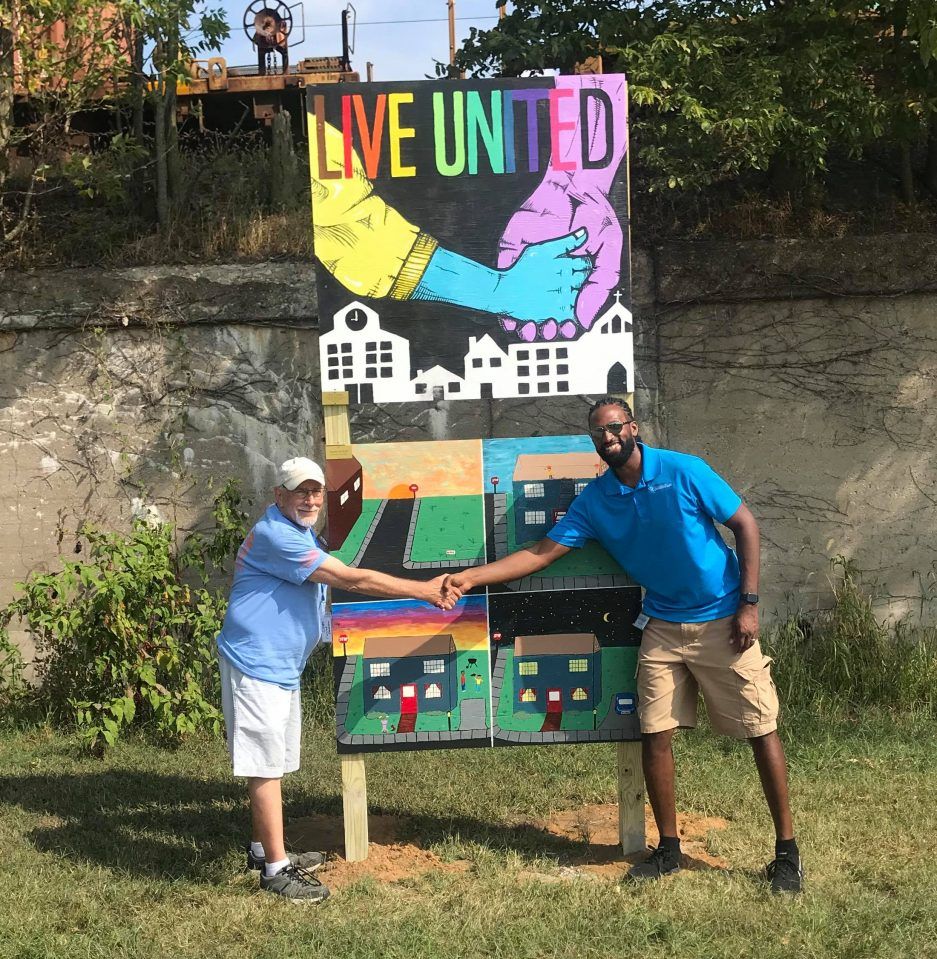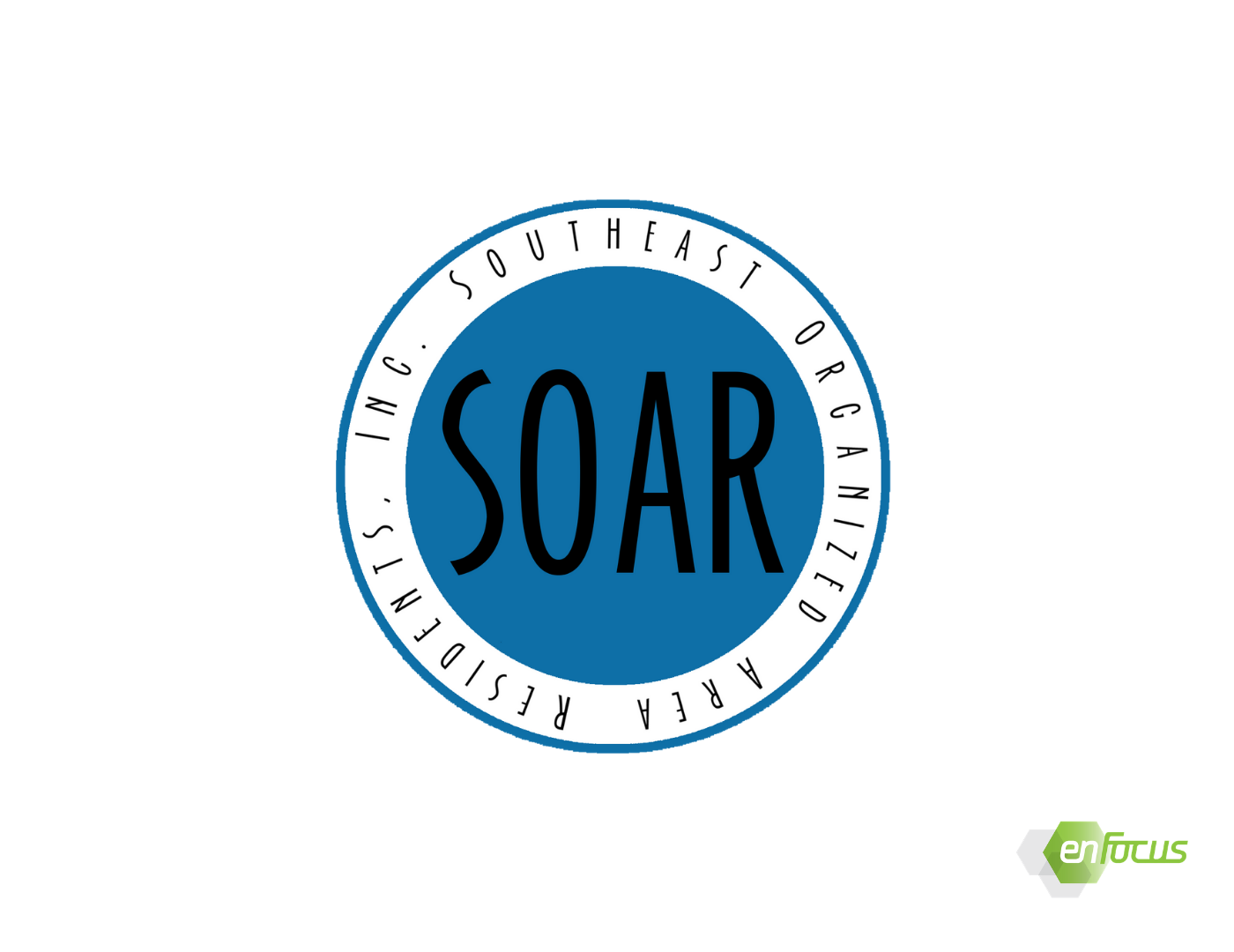Sponsor Spotlight: Southeast Organized Area Residents Inc. (SOAR), Neighborhood Association President, Conrad Damian
Interview by Haley Allaben, enFocus Innovation Fellow and project leader

Tell us about you, your role, and SOAR’s mission?
I’ve lived in the Southeast Neighborhood of South Bend for 51 years. I currently serve as the President of SOAR. SOAR was founded to give residents in the Southeast side a greater voice in the City and connection to the neighborhood. We wanted to provide real input from South Bend neighborhoods. SOAR became vocal to ensure that our neighborhood was a part of the City’s process and growth. As a neighborhood association, our goal is to represent our residents and work together to make a safe and thriving community.
We’ve worked hard to establish relationships within our community among other organizations, local schools, and residents of the Southeast neighborhood. We have had some previous success collaborating with Riley High School, the Center for Civic Innovation, Broadway Christian Parish, United Methodist Church, City of South Bend Venues Parks and Arts, Tutt Library, LangLab, United Way, 466 Works, Mount Carmel Missionary Baptist Church, and various other businesses. SOAR is always looking for people to join, share their perspectives, and participate in our yearly, sponsored neighborhood clean-up and picnic events. We want people to be involved in what’s happening in and to their neighborhood, making sure their voices are heard.
What are the biggest challenges that SOAR faces?
There is always the biggest challenge of just involving people so that SOAR reflects the thoughts and feelings of the people in this neighborhood. Young, married couples, high school students, college-aged people – those are the hardest individuals to reach because they’re often the busiest. I know it’s a challenge for some neighbors to make time for SOAR; they have work, school, children to care for, and other obligations that take up their time. If we do reach out, there’s the additional challenge of getting people informed, trying to gather their feedback, concerns, and questions, so SOAR is always working to overcome that challenge of truly engaging everyone.
This past year has been especially challenging. Our planned events had just started
getting bigger and were cancelled because of the pandemic so our forward movement was slowed.
How did this project come about?
As I understand it, the idea originated with Gary Gilot reacting to what he was hearing about our needs during one of our SOAR meetings. Gary has been a big supporter of SOAR, but also happens to be one of enFocus’ Board Members. He proposed the idea to enFocus, and they have been involved since.
The pandemic halted our in-person meetings, which caused more issues connecting with folks virtually. It exposed a need to teach digital literacy to older residents. One of our goals now is if we can teach our residents to engage virtually, that will really benefit both SOAR and our constituents. Getting people to learn our virtual options and how to use them is critical. It opens so many possibilities to invite more folks of all ages and backgrounds. We are looking forward to not only improving SOAR attendance and involvement, but also engaging young people in the process by leveraging their skills to help teach older residents’ and residents without immediate access to technology how to perform those key technical tasks.
There are so many limitations to working in and engaging the community completely virtually, so I think that the greatest possibilities lie in the hybrid model enFocus proposed. For those who are limited in their mobility and time, or even if they are homebound, the hybrid model of in-person and virtual SOAR meetings will allow people to remain involved. This project could even serve as a model for other neighborhoods experiencing similar digital and civic engagement challenges as we have faced.
We’re also really excited about the National League of City’s (NLC) Census and Local Democracy grant that the City of South Bend collaborated with enFocus on and received to continue bridging the digital accessibility and literacy divide and encourage people to engage in our community. This will continue to benefit SOAR and positively impact everyone in our community.
What has it been like working with enFocus?
enFocus’ support has been appreciated. The relationship is very, very positive. Our partnership only continues to grow and thrive. Working with Idriss Bah, an Innovation Fellow at enFocus, has been very good, too. He’s very thorough and specific; he’s put together a digital literacy plan in such a clear and careful way. Idriss attended our monthly SOAR meetings and participated in our sponsored clean-up event – in the pouring rain, no less! But really, on that level, it’s been nice that so much interest in what we do has been shown by enFocus and Innovation Fellows like Idriss.
This [partnership with enFocus] has been a natural fit throughout the project. SOAR is a place-based organization, as are most of our partners. enFocus fits that mindset very well and has their own relationships with key stakeholders like SJCPL, Bendable, Riley High School, and the City of South Bend. It’s reassuring to have a partner like enFocus that understands the area and really the community. They care deeply about supporting community organizations – SOAR included – to solve their complex problems and ultimately reach their goals.
Why do you think it’s important for people, especially young people, to be civically engaged in their communities?
I remember in the 1960s that, as youth, we were very involved in society. There was a time after then that civic engagement seemed to not interest people anymore. However, young people today, I think, are moving into civic engagement more than before. They seem more interested perhaps because they are watching society failing and asking big questions: why are marginalized communities unable to develop wealth? What about our society causes this? Why is my neighborhood this way? What can I do to help? Schools have also placed greater emphasis on the importance of volunteerism and civic engagement.
It [civic engagement] is critical. If civic engagement can continue to be fostered and developed within young people looking at their own neighborhood – looking closely, not far away at big cities with big problems – but starting with their own neighborhood, they can continue making positive changes, making things happen. They can continue to help their neighbors and neighborhoods. They might ask themselves “how do I fit into the neighborhood?” and hopefully the answers make them want to be a part of that positive movement and encourage others to join, too. I would love to continue seeing the component of young people and older residents really developing close relationships. This connection fosters intergenerational equity. Young people have a role to play in the neighborhood and I hope they view it as an asset. Civic engagement from all community members can drastically improve our residents’ lives now and in the future.
Learn more about enFocus' work with regional organizations in our next Sponsor Spotlight.
